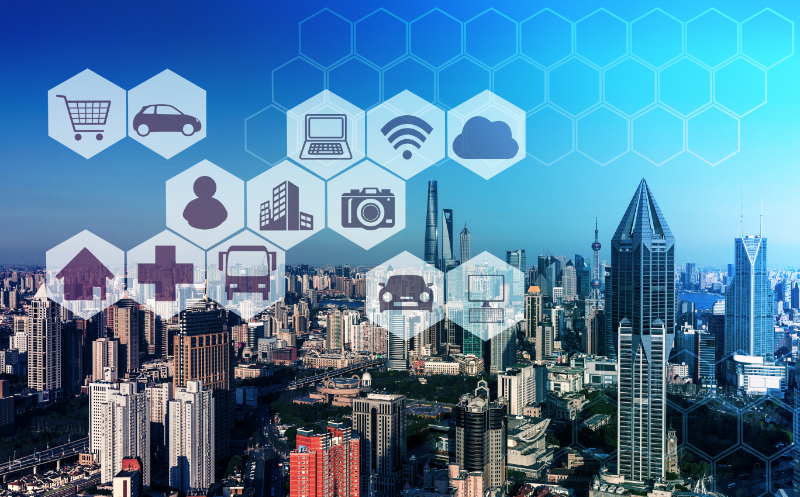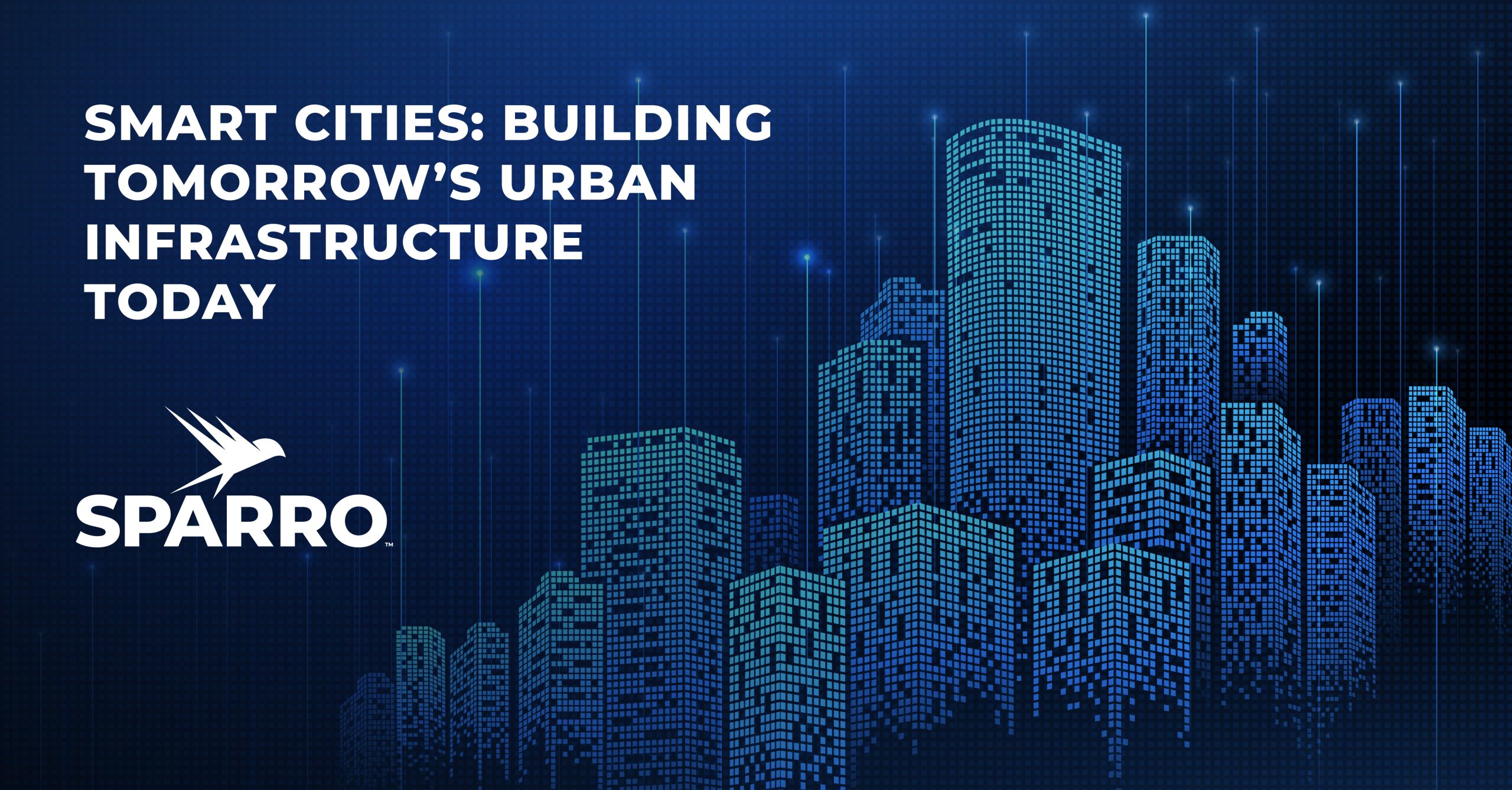Table of Contents
- What Makes a City “Smart”?
- The Business Case for Smart Cities
- Core Technologies That Power Smart Cities
- Implementation Considerations for IT Teams
- Real-World Applications That Deliver Results
- Making Smart Cities Happen
Cities worldwide are racing to embrace smart technology. The numbers tell the story: the global smart cities market was valued at $877.6 billion in 2024 and is projected to reach $3.76 trillion by 2030. For city managers and IT leaders, this growth represents both an opportunity and a challenge.
What Makes a City “Smart”?
Smart cities integrate technology across urban systems to improve efficiency, sustainability, and quality of life. These aren’t just buzzwords – they’re measurable outcomes that matter to residents and city budgets alike.
At its core, a smart city creates an interconnected ecosystem where physical infrastructure communicates digitally. Traffic lights adjust timing based on real-time congestion data. Water systems detect leaks before they become costly emergencies. Energy grids balance supply and demand automatically.
This connectivity happens through layers of technology working together. Sensors collect data from across the city. High-speed networks transmit this information instantly. Analytics platforms process the data to identify patterns and predict problems. Automated systems respond to changing conditions without human intervention.
The result is a city that learns and adapts. Emergency services receive automatic alerts about accidents. Public transit adjusts routes based on passenger demand. Street lighting dims in empty areas to save energy while brightening when pedestrians or vehicles approach.
Smart cities don’t just react to problems; they prevent them. Predictive maintenance identifies infrastructure issues before failures occur. Environmental sensors detect air quality changes before they affect public health. Traffic management systems reroute vehicles before congestion builds.
The Business Case for Smart Cities
Why should cities invest in smart technology? The benefits extend far beyond the initial excitement of new gadgets:
- Cost reduction – Smart systems optimize resource usage. Traffic management systems reduce fuel waste. Smart lighting cuts energy bills. Water monitoring prevents costly leaks before they become disasters.
- Improved services – Citizens gain better experiences, such as faster emergency response times, real-time public transit updates, and digital services that work 24/7.
- Economic growth – The smart cities market is expected to grow at a CAGR of 29.4% from 2025 to 2030. Cities that build smart infrastructure today position themselves as attractive destinations for businesses and residents.
- Sustainability – Environmental monitoring and automated systems help cities meet climate goals while reducing operational costs.
Core Technologies That Power Smart Cities
Several key technologies form the backbone of any smart city initiative. Understanding these components helps IT teams make informed decisions about implementation.
5G Networks: The Foundation
5G networks provide the foundation for smart city applications by enabling real-time connectivity for IoT devices, data storage, cloud access, and edge computing. Without reliable, high-speed connectivity, smart city applications simply can’t function.
5G provides the bandwidth and low latency needed for real-time applications. Emergency services, traffic management, and public safety systems all depend on instant data transmission.
With private 5G, cities gain the speed and reliability of 5G technology while keeping sensitive systems and communications separate from public 5G traffic. This also improves reliability and security and decreases congestion for high-priority applications and data.
Internet of Things (IoT) Sensors
IoT applications enable smart city initiatives worldwide by providing the ability to monitor, manage, and control devices remotely, yielding new insights from massive streams of real-time data.
These sensors collect data on everything from air quality to parking space availability. The key is choosing sensors that integrate well with existing systems and provide actionable data.
Edge Computing
Processing data at the edge reduces latency and bandwidth costs. For smart cities, this means faster response times for critical applications like traffic management and emergency services.
Edge computing also improves security by keeping sensitive data processing local rather than sending everything to the cloud.
Data Analytics Platforms
Raw data means nothing without analysis. Smart cities need platforms that can process massive data streams and provide actionable insights to decision-makers.

Implementation Considerations for IT Teams
Building a smart city isn’t just about buying new technology. IT teams face several critical decisions that will determine long-term success.
Network Infrastructure First
Start with robust networking. Smart city infrastructure relies on comprehensive connectivity solutions to enable monitoring systems for pollution, gas leakage, water management, and environmental safety. These applications only work with reliable connectivity.
Consider both current needs and future expansion. Today’s traffic sensors might become tomorrow’s autonomous vehicle guidance systems.
Security Cannot Be an Afterthought
Smart cities create new attack surfaces. Every connected device is a potential entry point for cyberthreats.
Build security into the architecture from day one, not as an add-on. Implement network segmentation, regular security audits, and incident response plans. Ensure that teams are fully trained on security protocols. The stakes are too high for reactive security measures.
Interoperability Standards
Vendor lock-in can become expensive quickly as cities expand their smart infrastructure. Choose technologies that work together.
Look for open standards and APIs that allow different systems to communicate. This flexibility saves money and enables innovation.
Scalability and Future-Proofing
Start small but plan big. Pilot projects should demonstrate value while building toward a comprehensive smart city vision.
Consider how today’s investments will integrate with future technologies. The decisions you make now will impact your city for decades to come.
Real-World Applications That Deliver Results
Smart cities aren’t theoretical. They’re operating today with measurable benefits:
- Smart traffic management – Adaptive traffic signals reduce congestion by up to 25% in some cities. Emergency vehicles get priority routing automatically.
- Predictive maintenance – Sensors monitor infrastructure health, identifying problems before they cause service disruptions or safety hazards.
- Environmental monitoring – Real-time air and water quality data helps cities respond quickly to environmental threats and track progress toward sustainability goals.
- Public safety – Integrated camera systems with AI analytics help first responders address incidents more effectively.
Making Smart Cities Happen
The technology exists today to build truly smart cities. The challenge lies in thoughtful implementation that delivers real value to citizens while managing costs and risks.
Success requires more than just technology; it demands strategic planning, stakeholder buy-in, and expertise in system integration. Cities need partners who understand both the technical requirements and the practical realities of municipal operations.
Smart city initiatives succeed when they’re built on robust network infrastructure that can scale with growing demands. They require cybersecurity frameworks that protect sensitive municipal data. Most importantly, they need seamless integration between different systems and vendors.
If you’re envisioning a smart future for your city, Sparro can help. Our team brings years of experience in network design, deployment, and system integration. Our experts understand the unique challenges faced in different implementations – for cities, things like budget constraints, regulatory requirements, and stakeholder expectations.
We start by conducting a comprehensive connectivity audit of your current infrastructure. Then we design scalable solutions that grow with your needs while delivering immediate value – from 5G networks that enable real-time response to edge computing solutions that keep data processing local and secure.
Let’s discuss how the right technology foundation can turn your smart city vision into reality. Contact Sparro today to schedule your consultation.

